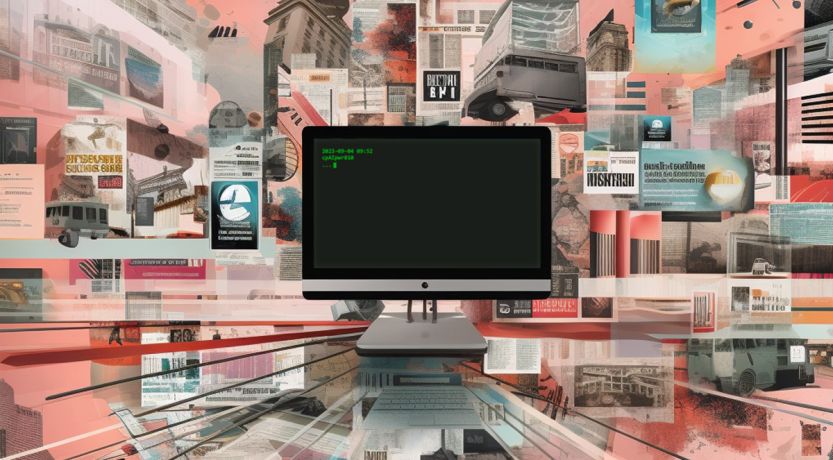In what ways is generative artificial intelligence redefining the boundaries of reality? How can you be protected from the deceptive impact of AI?
Artificial intelligence is doing things people thought were possible only in the realm of fiction. Even in its current form, the potential implications of AI are startling: the automation of millions of jobs, more powerful surveillance systems, autonomous weapons and more.
Some are saying that the recent advances in AI represent a watershed moment in the history of life on earth. And we are seeing only the beginning of what it can do because the rate of improvement is exponential, experts claim.
But one specific threat AI poses should serve as a wake-up call. It impacts the answer to this question: How good are you at being able to discern what is real and what is fake?
What do we mean by “AI”?
For most people, AI is nothing new. It’s become a ubiquitous part of daily life, whether we realize it or not.
Usually when we discuss AI, we are talking about complex algorithms that collect and process data to produce a result of some kind—your GPS that tells you when and where to make a turn, a personalized advertisement on your newsfeed, even the closed-captioning feature on a video.
But this is not the kind of AI flooding headlines today. What has captured the world in both awe and extreme skepticism is more specifically called generative artificial intelligence. It does what its name suggests: it generates. There are text generators, image generators, audio generators and more. The generative AI models are trained on terabytes of information, enough to produce with ease almost anything they are asked.
Here’s the kicker: the results have a humanlike quality to them, giving something artificial and manufactured the appearance of being real.
For example, even when it was introduced, the text generator ChatGPT could produce college-level essays in a way that was undetectable to a professor. But that was only the beginning. Since then, the platform’s developers have released an update that allows their chatbot to better exhibit human-level performance in all kinds of tasks.
According to OpenAI’s website, the most recent iteration of ChatGPT is “more reliable, creative, and able to handle much more nuanced instructions.”
When it comes to image generators, the results are similarly convincing. The generative AI platform called Midjourney creates award-winning art, as one digital artist found out. The tool makes it possible “for rank amateurs to create complex, abstract or photorealistic works simply by typing a few words into a text box” (Kevin Roose, “An A.I.-Generated Picture Won an Art Prize. Artists Aren’t Happy,” New York Times, Sept. 22, 2022).
Another generative AI platform worth mentioning is ElevenLabs, which is as fascinating as it is controversial. This model effectively clones a person’s voice after a few samples are uploaded and analyzed. Then ElevenLabs allows its users to make the voice say anything entered into the text box.
The extraordinary capabilities of generative AI are undeniable, but they stoke fear in many, for reasons that may be obvious at this point. Society already struggles to distinguish truth from falsehood, fact from fiction, authentic news from fake news, so how much more challenging will this task become with the advent of generative AI?
Martin Ford, author of Rule of the Robots: How Artificial Intelligence Will Transform Everything, summarized the uncertainty of generative AI in an interview with Built In. “No one knows what’s real and what’s not,” said Ford. “So it really leads to a situation where you literally cannot believe your own eyes and ears; you can’t rely on what, historically, we’ve considered to be the best possible evidence.”
In other words, the danger is that reality itself could be called into question.
Deepfakes and disinformation: the grave implications of generative AI
The severe threat generative AI poses is encapsulated in a viral clip of Volodymyr Zelensky unveiled in mid-March of 2022. The video showed the president of Ukraine calling all his troops to put down their arms and surrender to their Russian adversaries. He had already fled Kyiv, the clip claimed.
Except—nothing in the video was real. It was a deepfake, an AI-generated video that shows people doing or saying things they did not do or say.
Admittedly, the video had little effect, courtesy of the poor rendering and Zelensky’s strangely motionless body. But AI technology is evolving at a rate faster than we can wrap our minds around—and the more sophisticated the technology, the more convincing its product will be.
Ultimately, what the clip of Zelensky signals to the world is that there is a new and powerful avenue for bad actors to spread disinformation and sow political division.
The emergence of this technology comes at a time of heightened political polarization, which raises serious concerns about how partisans will protect themselves against AI-generated propaganda.
Disinformation campaigns on social media have taught us that it is especially challenging to persuade someone of the truth—reality—when it contradicts his or her existing beliefs. So when technology advances to the point where it becomes nearly impossible to distinguish legitimate from manipulated content, what kind of situation is created? Truth is not easier for someone to find when he or she is inundated with AI-generated text, video and audio that mimics reality.
The result may be people who are effectively insulated in their own subjective sense of reality.
Aside from the concern that AI could effectively control public opinion, the impact of AI is also presenting very personal dangers. Generative AI has been used by phone scammers to increase the believability of their schemes.
The only way to shield yourself from an onslaught of lies and illusions is by knowing the God of truth through prayer and Bible study.
The New York Post reported this year on a mother who claimed that scammers had used AI to clone her daughter’s voice in order to simulate an abduction and ask for a ransom of $1 million. Probably the most chilling moment of the story is when the mother first answered the supposed kidnapper’s phone call and heard the clone. “I never doubted for one second it was her,” the mother said.
The possibilities for deception have greatly expanded with the rise of generative AI. It may not be long before AI is used to fabricate evidence used in litigation. For instance, a parent may use AI to create a voice recording that incriminates the other parent and sways a child custody case.
The age unfolding right now fits a statement the apostle Paul made regarding the end times: “Evil men and impostors will grow worse and worse, deceiving and being deceived” (2 Timothy 3:13).
Is it possible to avoid the deception?
The apostle John foretold a period of massive deception that will occur before the return of Jesus Christ. He said, “Then I saw another beast . . . He performs great signs, so that he even makes fire come down from heaven on the earth in the sight of men. And he deceives those who dwell on the earth by those signs” (Revelation 13:11, 13-14).
Let’s be clear: The “beast” of Revelation 13 is not some vicious AI machine. The prophecy is about a supernaturally powered religious figure whose purpose is to deceive. The prophecy warns us of a time chillingly relevant today—a time when our own eyes and ears can betray us.
In other words, the prophesied mind-bending age of lies and deception is lurching forward, and AI is leading the way.
As lies and deception increase, Christians will need to be more diligent to apply the discerning spirit described in 1 John 4:1: “Do not believe every spirit, but test the spirits, whether they are of God; because many false prophets have gone out into the world.”
But how can we apply these words?
The only way to shield yourself from an onslaught of lies and illusions is by knowing the God of truth through prayer and Bible study. He is the only source of pure and unadulterated truth. Hebrews 6:18 provides this assurance: “It is impossible for God to lie.”
We can be sure that every word in the Bible is constant and eternal.
The author of Psalm 91 exemplifies the confidence we can have when we rely on the Bible as our ultimate guide. He describes society’s attempts to lie and entrap in deception as “the snare of the fowler,” but says God is ready and able to rescue (verse 3). Then the psalmist lays out God’s pledge to those who believe Him: “He shall cover you with His feathers, and under His wings you shall take refuge.”
Then notice the first two words in the next phrase: “His truth shall be your shield and buckler” (verse 4, emphasis added).
The Bible is the foundation of truth you need to navigate this increasingly fake world.
(For more information on how you can be sure the Bible is the Word of God, see our booklet Is the Bible True?)






